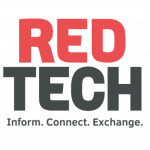For Radio.Cloud founder and CEO Christian Brenner, technology is part of the industry’s long-term success in many ways.
RedTech: What drives your company’s innovation engine?
Christian Brenner: We’re driven by the opportunity to help the radio industry overcome its challenges. Based on their needs, we create solutions that solve their current problems and provide flexibility for the future. We do understand that radio has invested heavily in technology in the past and that this technology is running many operations today. We provide strategies and a roadmap for a smooth and worry-free transition in every way our clients see fit. Our technology has an interface to all common industry solutions. Our staff has a lot of experience operating those legacy systems, knowing the current benefits and how they can do more with Radio.Cloud. We come from radio, we believe in radio, and we help our radio clients move to the future.
RedTech: How do your innovations keep radio and audio competitive in today’s digital landscape?
Brenner: The digital landscape changes rapidly, and what’s new today could be old tomorrow. We’re providing a platform to address exactly that, being flexible and reliable in a fast-changing world. Some key components include smooth onboarding, an easy-to-use interface, last-minute changes, and switching to live broadcast immediately. We provide those capabilities and empower our clients to save money from investing in hardware and expensive equipment. We are putting radio first with the mission of entertaining and informing the audience. Technology is a tool that must be a part of the future strategy for radio. The differentiator will be how radio adopts those tools for the desired outcome. Because, in the end, what matters most is the experience provided to the audience.
RedTech: What emerging technology will be crucial for the industry’s long-term success? Please explain.
Brenner: It’s easy to say cloud-based technology and artificial intelligence are crucial to a successful future for radio. But that’s a surface-level answer. We believe technology is part of the industry’s long-term success in many ways. In a short-term narrative, technology helps improve and reduce current workflows in a transitional phase. The conversation shifts when talking about long-term success. While “software-as-a-service” was established as a standard in the last 10 years, it will morph into “service-as-a-software.” That means the software platform also includes most parts of the service (for example, content delivery, syndication, music and commercial scheduling and AI voice components). This enables the staff to focus on radio’s true purpose and nature: to inform and entertain the listener.
We come from radio, we believe in radio, and we help our radio clients move to the future.
RedTech: Beyond streaming and on-demand, what new audio experiences should broadcasters prepare for?
Brenner: Broadcasters can benefit from the scaling effects of the new technologies, which are primarily based on and related to AI models. That means it’s now possible to brand radio stations more sophisticatedly. For example, an unhosted daypart can be turned into appointment listening, whereas, in the past, many stations treated unhosted dayparts as a time to play music-sweeper-music-sweeper-etc. On top of that, stations can even create individual and tailored commercials or tags within minutes, which can be aired almost instantly for a smooth listening experience. All this put together can easily be extended via hyper-localization across stations or markets with the click of a button. In summary, quality will improve drastically, and distribution will be done with the click of a button, thus super-serving your listeners.
Discover more about Radio.Cloud solutions here.
Innovators 2025: The secrets of smart innovation
ARD Audio Lab transforms radio for the digital age
Switzerland’s FM switch-off shows audience shift, not decline

